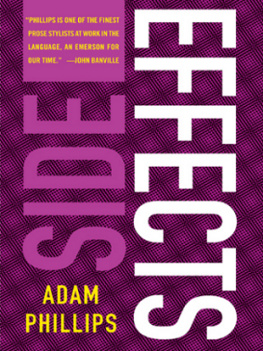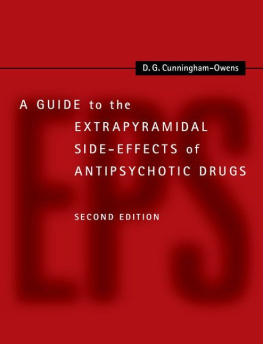Also by Frederic Vagnini, M.D.
With Dr. Richard Heller and Dr. Rachael Heller
Also by Barry Fox, Ph.D.
With Jason Theodosikas and Brenda Adderly
CONTENTS
CHAPTER 1
CHAPTER 2
CHAPTER 3
ACKNOWLEDGMENTS
Id like to thank my wife Nadine, Greg Buie, and Ara DerMarderosian, Ph.D., Director of the Complementary and Alternative Medicine Institute at the University of the Sciences in Philadelphia, for their help in reviewing and correcting the manuscript.
B.F.
I would like to thank my coauthor, Barry Fox, who is the main person responsible for this important piece of work. I believe Barry is one of the foremost medical investigators and writers in the world and it has been a privilege to work with him. I would also like to thank my dedicated employees at the Heart, Diabetes, and Weight Loss Centers of New York, especially my nurses, Ms. Susan Hill and Ms. Carolyn Fredericks, who have established a world-class heart and blood vessel diagnostic center. My administrative staff, led by Ms. Mildred Napo and her associates, are also a mainstay to my busy centers. My nutrition and vitamin company has been directed by my very capable nephew Daniel Chaigis, and without him my nutritional center would not be possible. My special woman, Laurie, has stood by me during my many hours of long work on a number of different projects. I am especially thankful for my daughters, Grace Marie and Clare Ann, who are the most special people in my life and have enabled me to keep going and working and have been my inspiration.
F.V.
HOW TO USE THIS BOOK
D ont let the size of this book intimidate you; its easy to use. The first step is to get the generic name of your drug off the bottle/box/tube. Not the brand name, which is always capitalized and often sounds like it was invented by the pharmaceutical companys marketing department. Look for the generic name, which may be in lowercase and sounds like something a chemist would be comfortable saying.
Next, find that generic name in the index, which begins. (Its not a good idea to flip through the drug entries in looking for the name of your drug. That might work, but many of the medications discussed are combined with others; it will be hard to find them because theyll be out of order in the otherwise alphabetical listing.)
Once you find your drug in the index, flip to the appropriate page, where youll learn about the medication, some of its possible side effects, which nutrients it robs you of, additional ways it may upset your nutritional status, and what supplements and foods you can use to replenish your stores.
Then you can read about each of the nutrients robbed in . There, in individual listings for each nutrient, youll learn what they do for you, the daily requirement, how safe the nutrient is, what side effects you may suffer if you get too much, and where to find it in foods. Each nutrient entry ends with a listing of drugs that rob you of that nutrient.
The final step is to discuss what youve learned with your physician. Remember, even though a drug may deplete you of a certain nutrient, you want your medical doctor to review the situation and make sure that taking that nutrient wont lessen the effect of the drug in question, wont interfere with other drugs youre taking, worsen a medical problem, and so on. Be sure to ask your physician what form of each nutrient is best for you.
By the way, you can also look through the index for your drugs brand name. Weve listed many, but not all, of them for your convenience. If youre not sure which is the generic and which is the brand name, ask your doctor or show the medicine to your pharmacisteither one will know.
CHAPTER 1 | Nutrient Robbery
S ixty-five-year-old Hannah had been struggling with stiff and painful fingers for some time before she went to see her physician. The disturbing diagnosis was rheumatoid arthritis (RA), for which Hannah was given a drug named Naprosyn. This painkiller helped considerably, but after she had been taking it for a while, Hannah became concerned about the fact that she was bruising easily and often, and was constantly constipated.
Her doctor assured her that there was nothing to worry about, for these were common side effects of Naprosyn. Ill give you another medicine, Dulcolax, for your bowels, he told her with a smile, and well keep our eye on that bruising.
The Dulcolax worked well; Hannahs constipation quickly disappeared. But months later she started noticing that she felt weak all the time, and she could swear that her stomach was funny.
When Hannah went back to see her doctor, he reassured her that these were standard side effects, nothing to worry about. Reaching for his prescription pad, he began scribbling new prescriptions for drugs that would alleviate her weakness and stomach distress. He then warned her about the side effects she might experience from taking these new drugs.
Hannahs story is unfortunate, but very common. You may have experienced it yourself.
You have a problem, for which your physician prescribes a drug. Thats Round One.
The medicine works, but it triggers a side effector maybe a few of them.
THEY SPARE ONE NUTRIENT BUT ROB MANY OTHERS
Diuretics help you expel fluid from your body. This is useful in treating elevated blood pressurethe idea is to reduce the blood volume by forcing excess fluid out of the body. As the volume of the blood drops, so does the blood pressure.
One family of diuretics, called the potassium-sparing diuretics, are specifically designed to prevent the loss of too much potassium. But while theyre protecting the potassium, these drugs are encouraging the exodus of numerous other nutrients from the body, including:
- Calciumpossibly leading to osteoporosis, muscle cramps, heart palpitations, and, surprisingly enough, elevated blood pressure
- Folic acidputting you at risk of headaches, fatigue, hair loss, appetite problems, and nausea
- Coenzyme Q10raising the odds of developing congestive heart failure, angina pain and stroke; plus, ironically, elevated blood pressure
- Magnesiumpossibly triggering insomnia, loss of appetite, kidney stones, depression, and elevated blood pressure
- Vitamin B6placing you in jeopardy of suffering from PMS, anemia, and depression
- Zincraising the risk of joint pain, weakened immunity, and depression
Naturally, you return to your doctor, who gives you a new drug or two to eliminate the side effects of the first round of medicines. Thats Round Two.
These new medicines take care of the side effects from Round One, but cause a few more of their own. So you go back to your doctor, who prescribes a new set of drugs. Thats Round Three, and it may go on even further. Some people go through four, five, even ten rounds of drugs/side effects/new drugs, and end up taking a cornucopia of pills, most of which were given to cure the side effects caused by other drugs.
If this was absolutely necessary, you might just accept your fate, swallow your daily cocktail of chemicals, and suffer the consequences. But its not. You dont have to swim in a sea of medications that can make you feel even worse just to keep yourself going.









